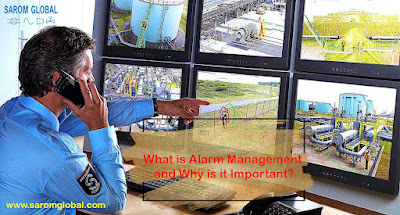How to Train Staff on How to Use an Alarm Management System
In today's security-conscious world, having a robust alarm management system is essential for safeguarding your premises and assets. However, simply installing this system is not enough. To maximise its effectiveness, it's crucial to ensure that your staff knows how to use it efficiently. In this guide, we'll walk you through the process of training staff on alarm management, covering everything from initial setup to ongoing maintenance.
Understanding Alarm Management
Before diving into training, let's briefly discuss what an alarm management system is and why it's vital. An alarm management system is designed to detect and alert users to specific events or conditions, such as security breaches, equipment malfunctions, or environmental changes. It plays a pivotal role in maintaining the safety and security of your organisation.
1. Installation and Configuration
The first step in training your staff on alarm management is to ensure that the system is correctly installed and configured. This involves:
- Physical Installation:
Your team should be familiar with the physical components of the system, such as sensors, cameras, and control panels.
- Software Configuration:
Training should cover the software side, including setting up alert thresholds, defining event categories, and configuring user access rights.
2. Understanding Alarm Types
To effectively respond to alarms, your staff needs to understand the different types of alarms generated by the system. These may include:
- Security Alarms:
Alerts for unauthorised access or breaches in security.
- Environmental Alarms:
Notifications about temperature, humidity, or other environmental changes.
- Equipment Alarms:
Alerts related to machinery malfunctions or failures.
- Fire Alarms:
Warnings about fire or smoke detection.
3. False Alarm Handling
False alarms can be a significant source of frustration and distraction. Train your staff on how to differentiate between false alarms and genuine threats. Emphasise the importance of verifying alarms before taking action to avoid unnecessary disruptions.
4. Alarm Response Procedures
Develop clear and concise alarm response procedures. Ensure that your staff knows how to react to different types of alarms. This may include:
- Security Response:
What to do in the event of a security breach, including contacting authorities and following evacuation protocols.
- Environmental Response:
How to address environmental alarms, such as adjusting climate control systems.
- Equipment Response:
Procedures for handling equipment alarms, which may involve contacting maintenance or shutting down machinery.
- Fire Response:
Immediate actions to take in the event of a fire alarm, such as evacuating the premises.
5. Ongoing Training and Maintenance
Alarm management is an ongoing process. Regularly update and refresh your staff's training to ensure they remain competent users of the system. Additionally, maintenance of the alarm management system is crucial to its reliability. This includes:
- Testing:
Regularly test the system to ensure that all components are functioning correctly.
- Software Updates:
Stay up-to-date with software updates and patches to address security vulnerabilities and enhance functionality.
- User Access:
Periodically review and update user access permissions to maintain security.
- Documentation:
Maintain comprehensive documentation on the system's setup, configuration, and procedures for easy reference.
6. Mock Drills and Scenarios
Conduct mock drills and scenarios to simulate real-life alarm situations. This helps your staff practise their responses and identify areas for improvement in a controlled environment.
In conclusion, training your staff on how to use an alarm management system is a critical aspect of ensuring the safety and security of your organisation. From installation and configuration to understanding alarm types and responding effectively, a well-trained team can make all the difference in maintaining a secure environment. Remember that ongoing training and maintenance are key to keeping your alarm system reliable and up-to-date.




Comments
Post a Comment